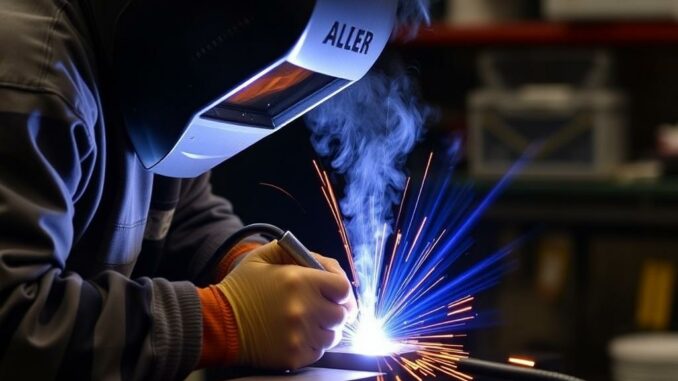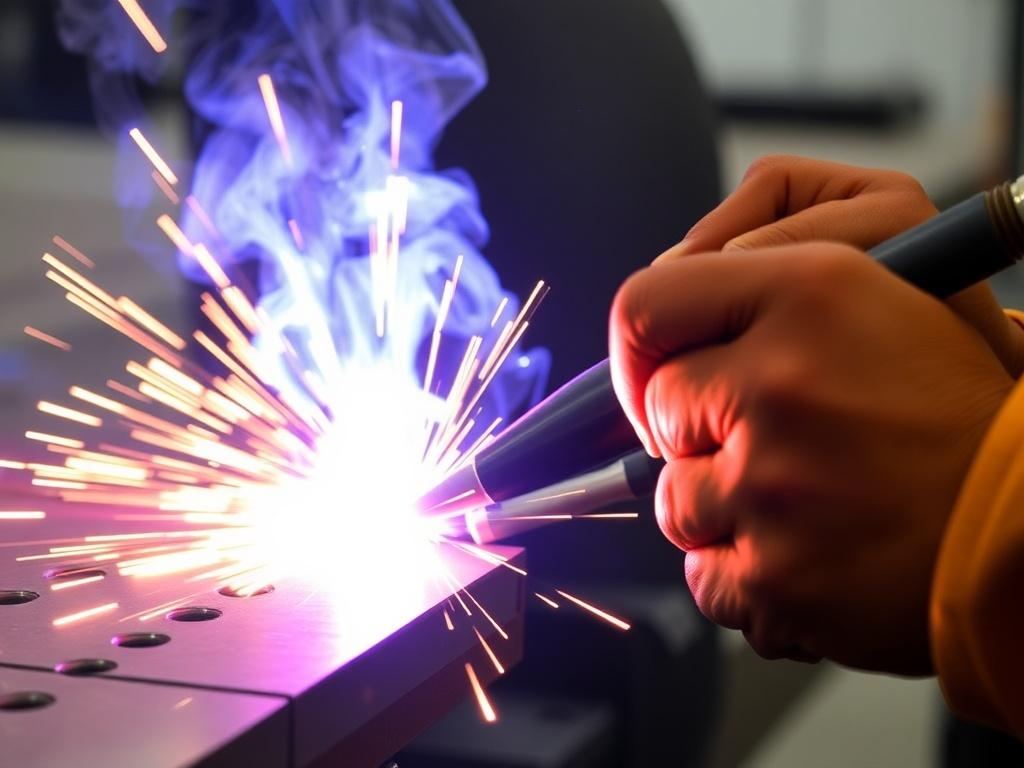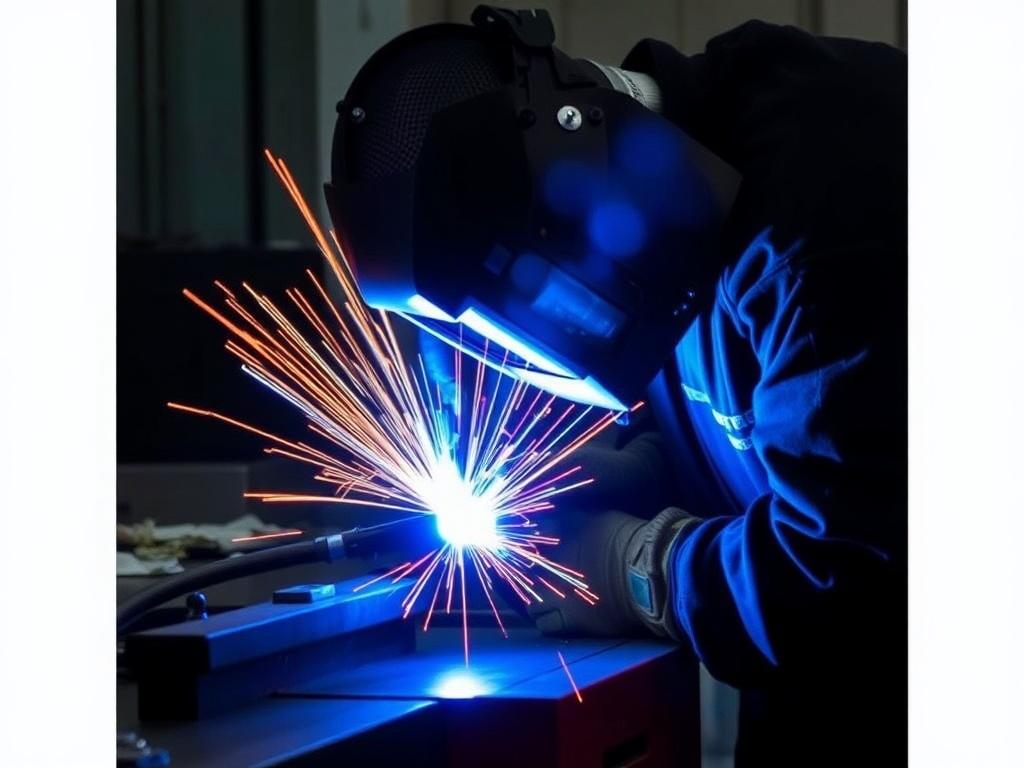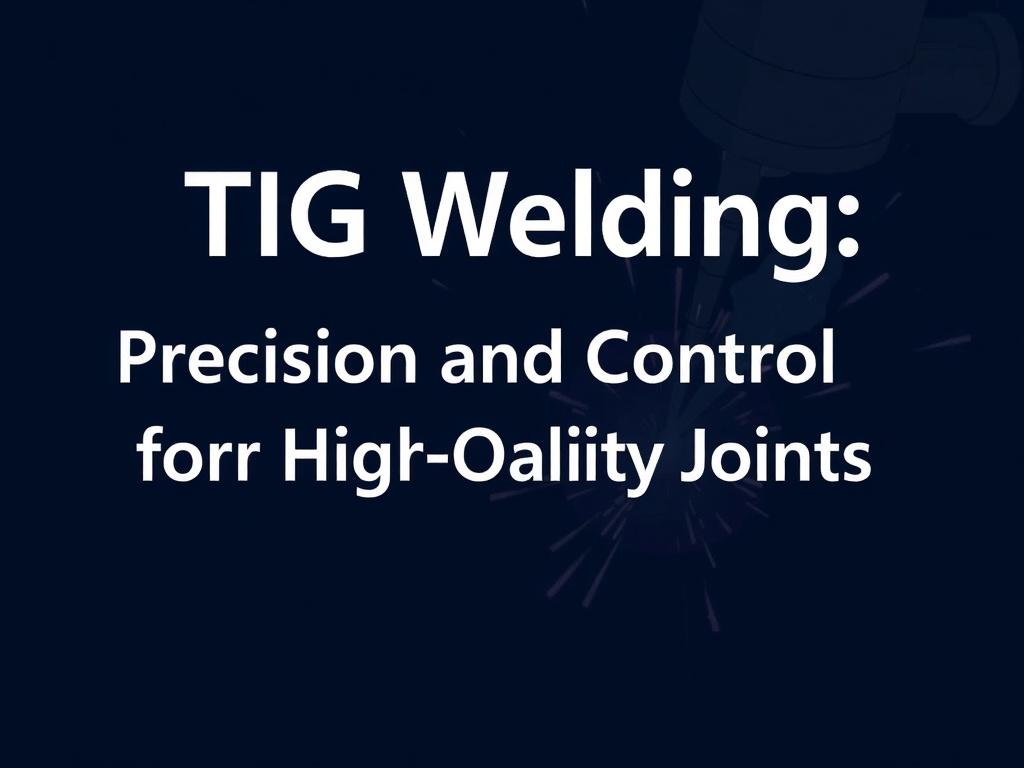
When it comes to creating strong, precise, and visually clean welds, TIG welding stands out as one of the most reliable and versatile techniques available to professionals and hobbyists alike. Known for its exceptional control and ability to produce high-quality joints, Total Inert Gas (TIG) welding plays a crucial role across countless industries, from aerospace to automotive restoration and even artistic metalwork.
In this comprehensive guide, we’ll explore the ins and outs of TIG welding, breaking down everything from its basic principles to advanced techniques that maximize precision and control. Whether you are a beginner eager to learn the craft or a seasoned welder looking to refine your skills, this article offers a thorough overview designed to inform and inspire. We’ll also unpack the tools, equipment, and best practices necessary to achieve flawless welds that stand the test of time.
What is TIG Welding?
TIG welding, also known as Gas Tungsten Arc Welding (GTAW), is a welding process that uses a tungsten electrode to produce the weld. The term “TIG” comes from the inert gas, typically argon or helium, that shields the weld area from atmospheric contamination. This shielding gas prevents oxidation and ensures a clean joint.
Unlike other welding methods, TIG welding offers unparalleled control since the welder operates using both hands: one to hold the torch and the other to feed filler metal. This level of manual precision allows for intricate welds on thin or delicate metals, which can be challenging with other techniques like MIG or stick welding.
The process is particularly valued for:
- Producing clean, high-quality welds with minimal spatter or slag
- Welding a wide range of metals, including stainless steel, aluminum, magnesium, and copper alloys
- Excellent control over heat input, reducing warping and distortion
- Capability to join thin sections with great precision
The Essential Equipment for TIG Welding
To achieve precision and control for high-quality joints, having the right equipment is critical. Each piece plays a vital role in the overall welding process.
TIG Welding Torch
The TIG welding torch is the centerpiece of the operation. It houses the tungsten electrode and directs the inert gas onto the weld area. Torches come in various sizes and designs, allowing welders to select the best fit for their specific applications. The torch’s ergonomic quality and cooling system can make long welds more manageable.
Tungsten Electrodes
Tungsten electrodes, unlike other welding rods, do not melt during the process. Instead, they provide a consistent arc to melt the workpiece and filler metal. The choice of tungsten electrode type and size affects arc stability and precision.
Shielding Gas Supply
Argon is the most commonly used shielding gas in TIG welding due to its inert characteristics. Sometimes helium or argon-helium mixtures are used to improve heat input and efficiency. Ensuring a consistent gas flow rate is crucial for protecting the weld pool from contamination.
Power Source
TIG welding requires a DC or AC welding machine depending on the base metal. DC machines are usually employed for steels and stainless steel, while AC machines handle aluminum and magnesium. Some modern power sources offer both AC/DC capabilities and features that maximize control and precision.
Additional Tools and Accessories
While the core tools focus on the torch, tungsten, and power source, practical accessories such as foot pedals for current control, tungsten grinders for electrode sharpening, and proper PPE (personal protective equipment) help maintain high-quality, safe welds.
The Science Behind TIG Welding: How It Works
TIG welding operates on a simple yet highly controlled principle. The welder uses an electric arc struck between a non-consumable tungsten electrode and the metal workpiece. This intense heat melts the workpiece and filler rod to create a molten weld pool. An inert gas flows around the arc and weld pool, shielding it from oxygen and nitrogen in the air, which would otherwise cause oxidation or weak welds.
One of the reasons TIG welding allows so much precision is the separate control of heat and filler metal. The welder can adjust the current dynamically using a foot pedal or fingertip control, increasing or decreasing heat as needed. Meanwhile, the filler rod is manually fed into the molten pool, allowing for perfect layering and strong bonds. This sensitivity contrasts with other welding methods where the filler metal and heat are less independently controlled.
Understanding Arc Characteristics
The arc in TIG welding is stable and concentrated. It produces less spatter and noise than other methods, which is one reason TIG welding is favored for jobs where aesthetics are paramount. The focused heat also allows welders to work on very thin metals without burning through.
AC vs DC TIG Welding
Alternating Current (AC) TIG welding is typically used for aluminum and magnesium alloys because the alternating polarity cleanly removes the oxide layer from the metal’s surface. Direct Current (DC) TIG welding, on the other hand, is preferred for steels and other ferrous materials, providing a steady and deep arc that enhances penetration.
| Parameter | TIG Welding AC | TIG Welding DC |
|---|---|---|
| Best For | Aluminum, Magnesium | Steel, Stainless Steel, Copper |
| Cleaning Action | Good (Removes oxide layer) | Minimal |
| Penetration | Moderate | Deep |
| Arc Stability | Good | Excellent |
| Electrode Wear | Faster | Slower |
The Advantages of TIG Welding

One of the main reasons TIG welding is preferred for creating precision and control in high-quality joints lies in its versatility and the premium finish it offers. Let’s break down the advantages that make TIG welding a top choice worldwide:
Exceptional Weld Quality and Appearance
TIG welds are smooth and clean with no spatter or slag, which minimizes the need for post-weld cleanup. This makes TIG welding ideal for projects requiring a professional finish where the weld seam should look aesthetically pleasing.
Precise Heat Control
Because the heat source can be finely adjusted, welders can manage the thermal impact on metals carefully. This reduces the risk of warping or melting through thin metals, improving joint strength and appearance simultaneously.
Welding of Thin Materials
TIG welding is unmatched in its ability to weld thin gauge metals without damaging or burning through the workpiece. This is highly desirable in industries like aerospace, bicycle manufacturing, and HVAC where lightweight materials are common.
Wide Range of Metals
This welding process can handle many types of metal, including exotic materials like titanium and Inconel. Such flexibility allows welders to use TIG techniques in a variety of challenging environments.
Non-Consumable Electrode
Since the tungsten electrode doesn’t melt the way other rods do, it provides a consistent arc and reduces electrode consumption costs.
Environmentally Friendly
TIG welding produces no smoke or fumes, making it more environmentally friendly and comfortable for operators working in poorly ventilated spaces.
Common Applications of TIG Welding

Thanks to its precision and ability to create high-quality joints, TIG welding is used in diverse fields, ranging from intricate artistry to the most demanding industrial applications.
Aerospace Industry
Aircraft require lightweight, strong welds on aluminum and titanium alloys. TIG welding’s precise heat control makes it the preferred method in aerospace structural components and engine repairs.
Automotive Sector
Custom car builders and restoration experts use TIG welding to work on thin sheet metal and stainless steel components that demand clean joints and a sharp finish.
Manufacturing and Fabrication
Small parts manufacturing, like bike frames, kitchen equipment, and scientific instruments, benefit from the precision offered by TIG welding.
Art and Sculpture
Artists working with metals choose TIG welding for its ability to make detailed and controlled welds while preserving the aesthetic appeal of their projects.
Food and Beverage Industry
Stainless steel piping and tanks require contamination-free welding joins. TIG welding fits these hygiene-sensitive applications perfectly.
Mastering TIG Welding Techniques for Precision and Control
Reaching a high level of precision with TIG welding requires practice and attentiveness to technique. Here are some of the key skills and tips to master this incredible welding process.
Preparing the Workpiece
Cleanliness is paramount in TIG welding. Oils, paint, rust, and dirt must be thoroughly removed to avoid weld contamination. Many welders use a stainless steel wire brush dedicated only to the metal type being welded.
Sharpening the Tungsten Electrode
Sharpening the tungsten electrode correctly improves arc stability and concentration. The electrode should be ground lengthwise, creating a pointed tip for DC welding or a balled end for AC welding.
Angle and Travel Speed
Maintaining the correct torch angle—generally around 15 degrees from vertical—ensures proper shielding gas coverage and prevents porosity in the weld. A consistent travel speed prevents undercutting or excessive buildup.
Filler Metal Technique
Feeding filler metal steadily and in small amounts helps maintain weld pool control and prevents overheating. Watch the molten pool closely and add filler where needed.
Using the Foot Pedal
The foot pedal is a crucial tool for modulating current output during welding. Starting with a low amperage and then smoothly increasing it helps avoid burn-through and allows for weld pool control.
Practice Makes Perfect
As with any complex skill, repeated practice builds muscle memory and enhances eye-hand coordination. Many TIG welders start on scrap metal, practicing different positions and thicknesses.
Common Challenges and How to Overcome Them
While TIG welding is immensely rewarding, beginners often face some hurdles. Here are a few typical challenges and how to solve them:
| Common Challenge | Cause | Solution |
|---|---|---|
| Porosity and Gas Contamination | Inadequate shielding gas flow, drafty environment | Check gas flow rate, improve shielding, reduce drafts |
| Cracking in Weld | Excessive heat, improper filler metal | Lower heat input, use appropriate filler metal |
| Electrode Contamination | Touching the tungsten to molten pool or filler metal | Keep electrode from contact, re-sharpen as needed |
| Burn Through Thin Metal | Too high amperage or slow travel speed | Lower current, increase travel speed |
Safety Considerations in TIG Welding
Safety should always come first in any welding operation, and TIG welding is no exception. Though TIG welding produces fewer fumes than other methods, it still involves significant risks such as exposure to UV radiation, electric shock, and fumes from metals.
- Wear Proper PPE: Use a good quality welding helmet with an appropriate shade, flame-resistant gloves, and protective clothing.
- Ventilation: Ensure adequate ventilation to avoid inhaling metal fumes, especially when welding metals coated with contaminants.
- Electrical Safety: Always inspect cables and machines for damage and ensure proper grounding.
- Fire Prevention: Keep flammable materials away from the welding area.
Conclusion: Why TIG Welding is the Top Choice for Precision and Quality

In a world where metal fabrication demands both strength and finesse, TIG welding continues to shine as the go-to method for professionals seeking the highest standards. Its unmatched precision, combined with the ability to weld a broad range of metals and thicknesses, makes it a versatile and superior welding technique.
By understanding the equipment, mastering the technique, and observing safety protocols, welders can produce joints that are not only structurally sound but also visually appealing. Whether you are involved in repairing aerospace components, building intricate sculptures, or fabricating stainless steel kitchen equipment, TIG welding empowers you to achieve precision and control for high-quality joints every time.
For anyone eager to elevate their welding craft, investing time and effort into learning TIG welding is a decision that promises great returns in skill, capability, and finished work excellence.
